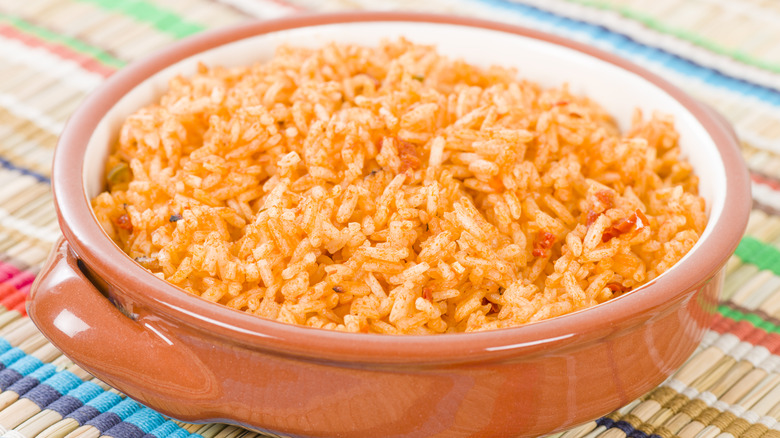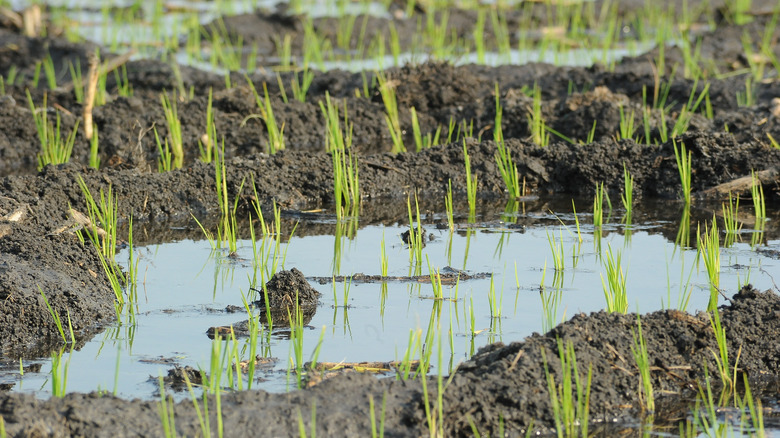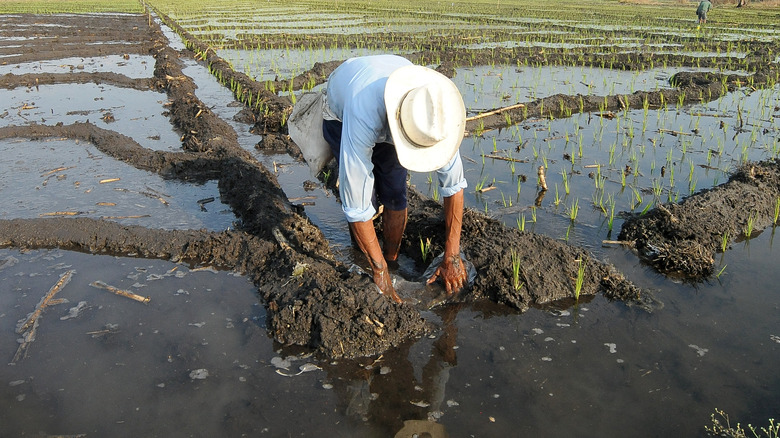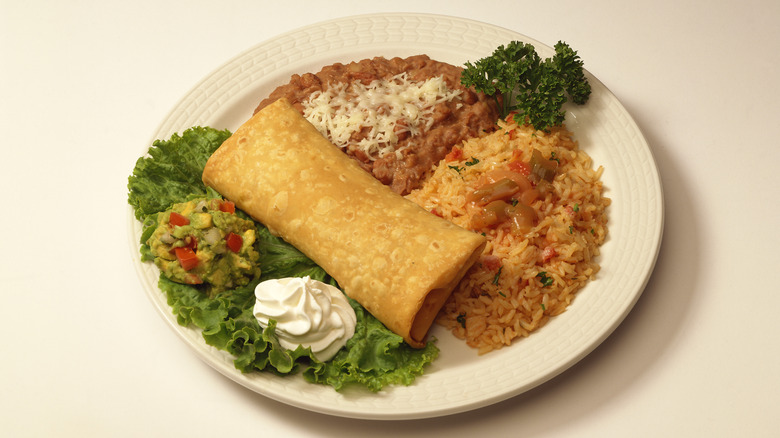The Mexican Rice Variety So Cherished It's Federally Protected
Though Universidad Internacional lists Morelos as Mexico's second smallest state, the idyllic climate packs plenty of appeal — think tourist attractions aplenty, weather that's perfect for year-long film productions, a booming sugar and flower industry, and a kind of rice you can't find anywhere else in the world.
The rice in Morelos had begun as an experiment, but the area for growing the modified rice grain has gone from a single field to one that now produces 10,000 tons, according to Mexicanist. Known for its thick size and fluffy texture, Morelos rice has quickly become one of the most beloved brands of Mexican rice, says Instacart. Whether you are planning to serve Mexican rice for lunch or try our Shortcut Spanish Rice recipe for tonight's dinner, incorporating Morelos rice can give your meal a satisfying texture. See why Morelos rice deserves a place as a staple ingredient in your kitchen pantry.
Protected status
Morelos rice comes from Zacatepec, an area managed by the National Institute of Forestry Research that has been labeled with the unique Designation of Origin (D.O.) distinction, which assures consumers that the source of the food and stated means of harvesting and processing is legitimate (via Mexicanist). SciELO notes that in 2012, rice from Morelos received the D.O. label after producers and government agencies strove to acquire this designation for the ingredient.
The Mexicanist explains the D.O. label protects the rice's unique system of production, as some producers were labeling rice "Morelos" when it wasn't, in fact, made in the region. The fear was that the rice was not of the expected quality and sold for lower prices, ultimately confusing consumers and damaging the reputation of Morelos rice and its producers. After the rice was declared D.O., a strict set of criteria was applied, including the size, weight, color, and place of origin for rice marked Morelos.
How Morelos rice is grown
Since 1946, the National Institute of Forestry, Agricultural and Livestock Research has experimented with producing rice, eventually reaching the point where the yield is more than any other site of rice production, notes Mexicanist. Morelos rice is hand-harvested when humidity reaches around 25%, typically five months after planting. The harvested rice is put in sacks and sent to the mill; drying is a crucial component and the first step in the milling process. Once the grains are dried, the rice is passed through machines that clean, de-husk, and polish the kernels before the rice is packaged and sent to markets.
The rice from Morelos is grown during the spring and summer months at an altitude of 800 to 1,200 meters above sea level, explains Mexicanist. Sowing can take place by hand or machine, yet Morelos rice is typically made by flooding the rice fields with a few centimeters of water. However, the use of excess water in the fields has become an environmental concern, given its scarcity in the area.
Using Morelos rice
Food & Wine observes that you'll find rice on many tables in Mexico: served as a side, spooned into soups, or used as binders and bases. NPR agrees, saying rice is one of the key ingredients for Mexican cooking, and the long-grain rice from Morelos adds a special bite. The quality of the rice from the Morelos region is high, insists Mexicanist, and the long grains work well in recipes that call for longer cooking times since the rice can maintain its shape. As a result, seasonings and vegetables can be added with ease and to taste. Mexicanist adds this rice is ideal for sweet and salty dishes and stews, as it is thick enough to accompany sauces and moles without sponging up excess moisture.
Whether you have a go-to dish that you serve with rice or want to experiment with a new recipe, a serving of Morelos rice can be the finishing touch your meal needs.



